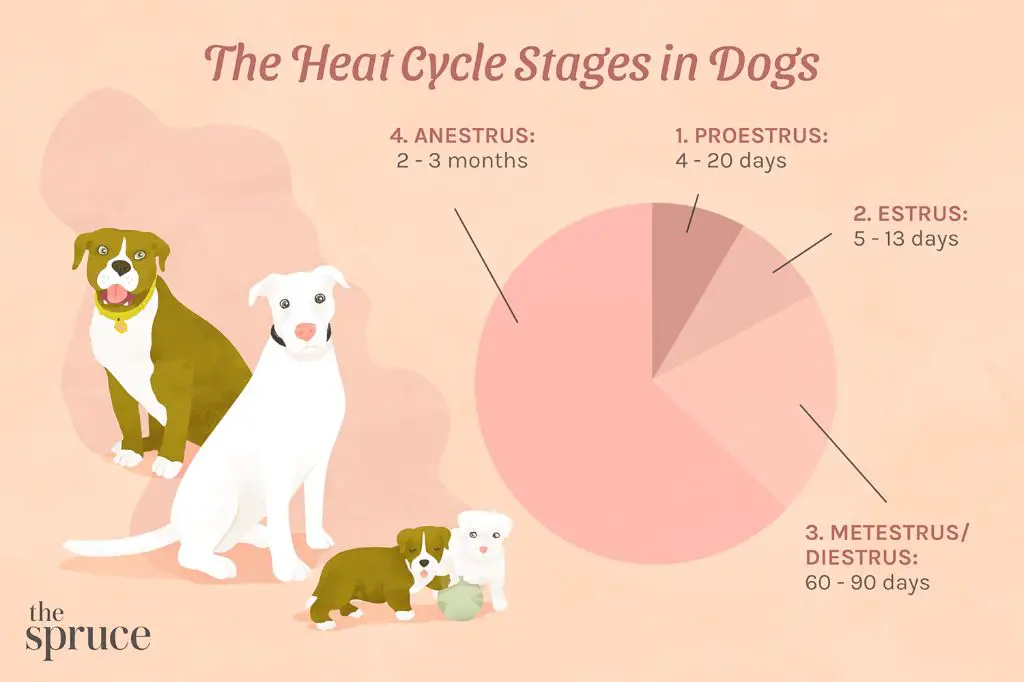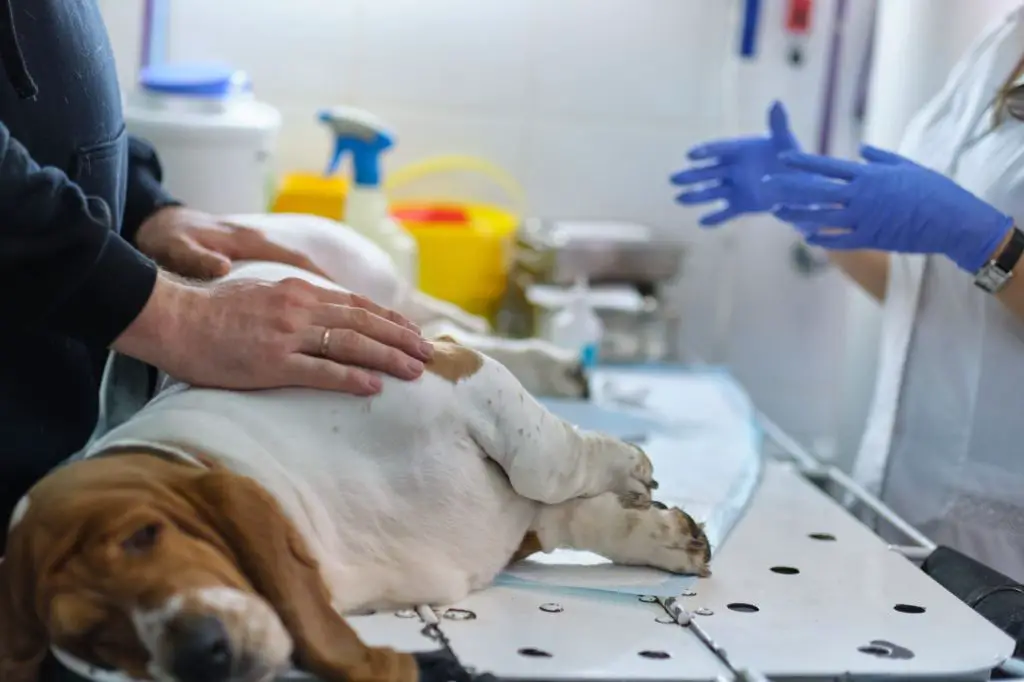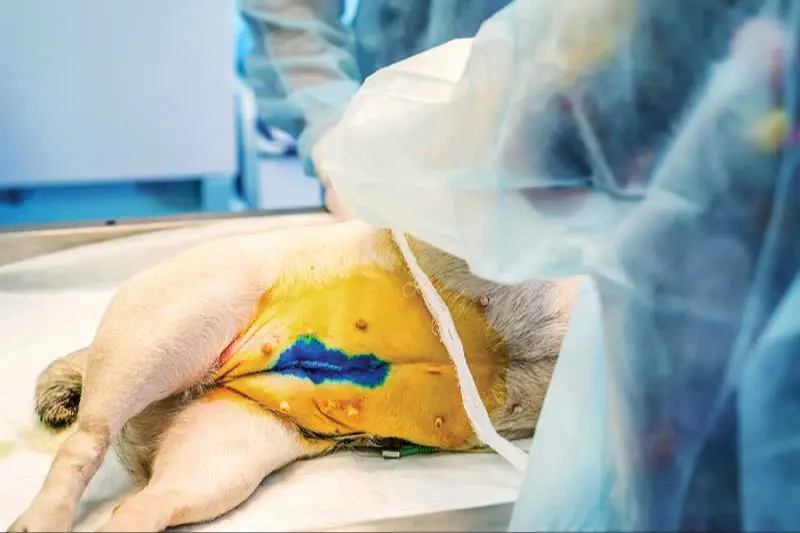Introduction
After an unexpected mating, there may be situations where preventing pregnancy in your dog is warranted. Controlling dog overpopulation and avoiding accidental litters are responsible practices for pet owners. While spaying and neutering are the best long-term solutions, there are some steps that can potentially be taken after mating occurs to avoid bringing puppies into the world. However, the options become more limited as time progresses after the mating event. This article provides an overview of techniques for stopping dog pregnancy after mating has occurred. We will review emergency contraceptives, termination procedures, and other alternatives to discuss with your veterinarian.
Understand the Dog’s Reproductive Cycle
Female dogs go into heat or estrus usually twice a year. This is the period when they are fertile and able to get pregnant. The heat cycle lasts 18-21 days on average. Ovulation occurs around the 11th day of estrus, when eggs are released from the ovaries. This is the optimal time for mating and fertilization. The eggs can be fertilized for up to 2 days after ovulation. Sperm can survive inside the female for up to 4-5 days after mating. Therefore, the fertile period when pregnancy can occur is about 5-7 days of the roughly 3 week heat cycle.
It’s important to understand this reproductive timeline when considering how to prevent an unwanted dog pregnancy after mating. The options differ depending on where the female is in her cycle when the breeding takes place.

Consider Spaying or Neutering
If your dog is not intended for breeding purposes, one of the best ways to prevent unwanted pregnancies is to have your dog spayed (female) or neutered (male). Spaying/neutering provides many benefits beyond birth control, including:
- Eliminates the risk of uterine infections and breast tumors in females
- Reduces the risk of prostate issues and testicular cancer in males
- Decreases roaming, territorial marking, and other hormone-driven behaviors
- Makes dogs less likely to develop aggression or anxiety
- Generally extends lifespan by eliminating reproduction risks
Spaying and neutering should be performed by a licensed veterinarian. It’s best to spay females before their first heat cycle, ideally around 5-6 months old. For males, neutering can be done once the testicles fully descend, usually between 4-6 months old.
While spay/neuter surgery is the most effective birth control, it is a permanent option. For dogs intended for breeding later on, some of the options below can prevent pregnancy until the owner is ready for their dog to have puppies.
Emergency Contraceptives
Emergency contraceptives like Plan B or the morning after pill can be used to prevent pregnancy in dogs if given shortly after mating. These contain the hormone progestin, which prevents or delays ovulation. For dogs, the medication Ovaban is sometimes prescribed for this purpose.

Emergency contraceptives should be given within 2-3 days after mating in order to be effective. The sooner they are administered, the better they work. Speak to your veterinarian about obtaining Ovaban or another emergency contraceptive specifically formulated for dogs.
It’s important to note that emergency contraceptives do not always work and may not terminate an existing pregnancy. However, they can significantly reduce the chances of pregnancy if used properly under a vet’s supervision. Give your dog the recommended dosage for her size and continue to monitor her closely over the following weeks.
Prostaglandin Injections
One effective medical way to terminate a dog’s pregnancy after mating involves the use of prostaglandin injections. Prostaglandins are hormones that play an important role in the female reproductive system, including in pregnancy and birth.
When given as an injection, prostaglandins can induce abortions and stop pregnancy in dogs. They help initiate contractions, soften the cervix, and expel the fetus and placenta from the uterus.

The timing is important when using prostaglandins. They are generally only effective for terminating a dog’s pregnancy in the first 4-5 weeks after breeding. The injections are administered by a veterinarian, either in the muscle or under the skin.
Some side effects may occur with prostaglandin use, including panting, vomiting, diarrhea, and straining. Prostaglandin abortion should only be performed by an experienced veterinarian for the health and safety of the dog.
Pseudopregnancy Drugs
One method for ending a dog’s pregnancy is to induce a pseudopregnancy, which is a false pregnancy. This causes the dog’s body to think she is pregnant when she actually isn’t, leading to reabsorption of embryos or spontaneous abortion.
Veterinarians can prescribe certain drugs that induce pseudopregnancy in dogs. These drugs stimulate the corpus luteum to continue producing progesterone, which maintains the pregnancy. However, without fertilized eggs, the pregnancy cannot be sustained.
The most common drug used for this purpose is called Cabergoline. It is given in tablet form on the 25th and 34th days after the first mating. Cabergoline effectively ends the pregnancy within 10 days of administration by causing the uterine lining to slough off and expel its contents.
Other drugs like bromocriptine and metergoline can also stimulate pseudopregnancy when given at key stages post-mating. Close veterinary monitoring is required to ensure proper timing and dosage of these drugs.
The main advantage of using pseudopregnancy drugs is that they avoid surgery. However, timing is critical and they can have side effects like vomiting, lethargy, or diarrhea in some dogs. Speak to your veterinarian to see if inducing pseudopregnancy could be a viable option for terminating your dog’s pregnancy.
Surgical Termination
Surgical termination of a dog’s pregnancy may be an option in certain circumstances when recommended by a veterinarian. This procedure involves surgically removing the uterus and fetuses and is typically only performed in an emergency or when the health of the mother dog is at serious risk.
Reasons a veterinarian may recommend surgical termination include:
- The mother dog has a life-threatening condition that makes continuing the pregnancy dangerous
- There are complications with the pregnancy that threaten the health of the puppies or mother
- The pregnancy resulted from incest or breeding with an aggressive dog, resulting in high-risk puppies
- The mother dog is too young or too old to safely deliver puppies
- There are too many puppies in the litter, posing risks for the mother and puppies
Surgical termination carries risks including infection, bleeding, and complications from anesthesia. It is invasive, expensive, and should only be considered when medically necessary and under veterinary supervision. Less invasive options may be available depending on the circumstances.
Herbal Abortifacients
Some dog owners may consider using herbal remedies like pennyroyal, black or blue cohosh, parsley, or vitamin C to terminate a dog’s pregnancy. However, these should be avoided due to significant safety concerns.
While some sources claim herbs like pennyroyal can induce abortion, they are toxic and can cause liver and kidney failure or death in dogs. Herbs are not regulated like medications, so their purity and potency can vary greatly. Their effects and safety are not thoroughly studied in dogs.
Additionally, appropriate dosing of herbs is challenging to determine. Too high of a dose risks toxicity. Too low of a dose may be ineffective and allow pregnancy to continue, resulting in the birth of unhealthy puppies. Overall, herbal abortifacients are an unpredictable and dangerous approach.
It’s best to work with your veterinarian and use proven medical options for pregnancy termination. Never attempt to induce abortion in a dog using homemade herbal remedies, as they can harm your pet.
Care After Abortion
Properly caring for your dog after an abortion is critical for her health and well-being. Here are some tips for her recovery:
Allow your dog ample time to rest and limit her activity for several days after the procedure. Take short, gentle walks but avoid strenuous exercise while she heals.
Make sure your dog has access to plenty of fresh water and nutritious food to help her regain strength. Feed smaller, more frequent meals if she has a decreased appetite.
Watch for potential complications like bleeding, discharge, fever, lethargy or changes in behavior. Contact your veterinarian if you notice anything abnormal.
Give any prescribed medications as directed to manage pain, prevent infection and aid healing. Never give human medications.
Provide a comfortable, peaceful area for your dog to recover and give her extra love and affection. The hormones fluctuating after an abortion can cause behavioral changes.
Schedule a follow up veterinarian visit 7-10 days after the abortion to ensure your dog is healing properly. Your vet may want to check her hormone levels.
Use the time during her recovery to reinforce training and deepen your bond through cuddling, grooming and massage. Be patient as her body and mind heal.
With proper aftercare and monitoring, your dog can make a full recovery and return to her normal energetic, happy self.
Preventing Future Litters
The best way to prevent unwanted dog pregnancies in the future is to have your dog spayed or neutered. This is a surgical procedure that prevents dogs from being able to reproduce. It has many health and behavioral benefits for dogs as well.

Spaying, which is the removal of the ovaries and uterus of female dogs, is 99.5% effective at preventing pregnancy. It should ideally be done before the dog’s first heat, which usually occurs around 6 months of age.
Neutering, which is the removal of the testes in male dogs, is also 99.5% effective. It can be done as early as 8 weeks old. Neutering makes males unable to produce sperm to fertilize eggs.
Spaying and neutering should only be performed by a licensed veterinarian under anesthesia. Recovery time is usually less than 2 weeks. There are minimal long-term risks.
Permanent contraception helps reduce pet overpopulation. It can also reduce certain health risks for dogs like uterine infections and testicular cancer. The behavior of neutered males may be more manageable as well.
Discuss spaying or neutering with your vet to choose the best time to sterilize your dog for their breed, age, and health status. This is the most responsible way to prevent accidental litters in the future.